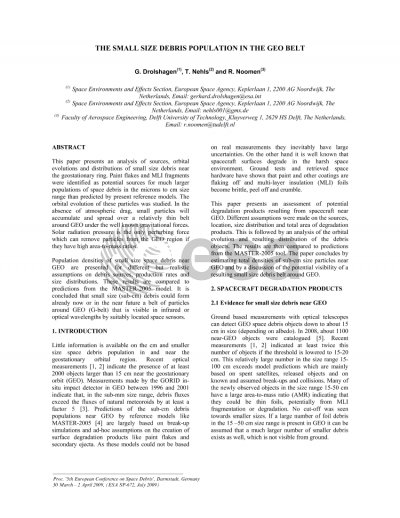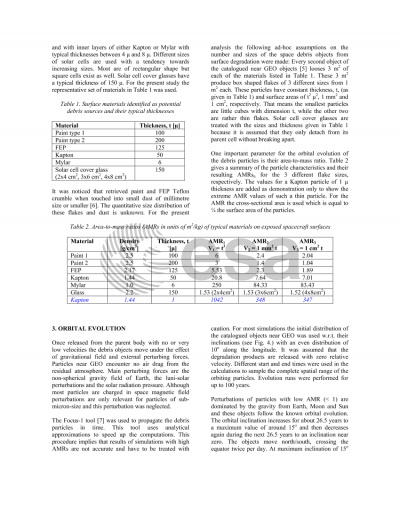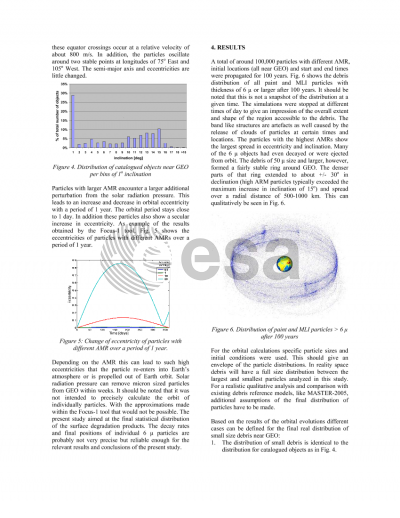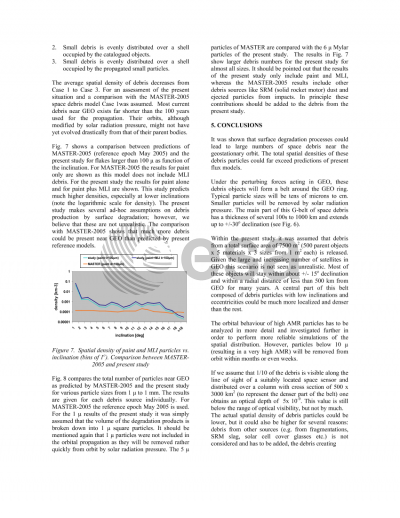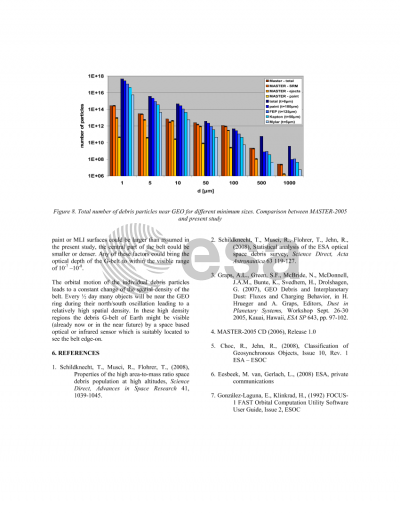Document details

Abstract
This paper presents an analysis of sources, orbital evolutions and distributions of small size debris near the geostationary ring. Paint flakes and MLI fragments were identified as potential sources for much larger populations of space debris in the microns to cm size range than predicted by present reference models. The orbital evolution of these particles was studied. In the absence of atmospheric drag, small particles will accumulate and spread over a relatively thin belt around GEO under the well known gravitational forces. Solar radiation pressure is the only perturbing force which can remove particles from the GEO region if they have high area-to-mass ratios.Population densities of small size space debris near GEO are presented for different but realistic assumptions on debris sources, production rates and size distributions. These results are compared to predictions from the MASTER-2005 model. It is concluded that small size (sub-cm) debris could form already now or in the near future a belt of particles around GEO (G-belt) that is visible in infrared or optical wavelengths by suitably located space sensors.
Preview
